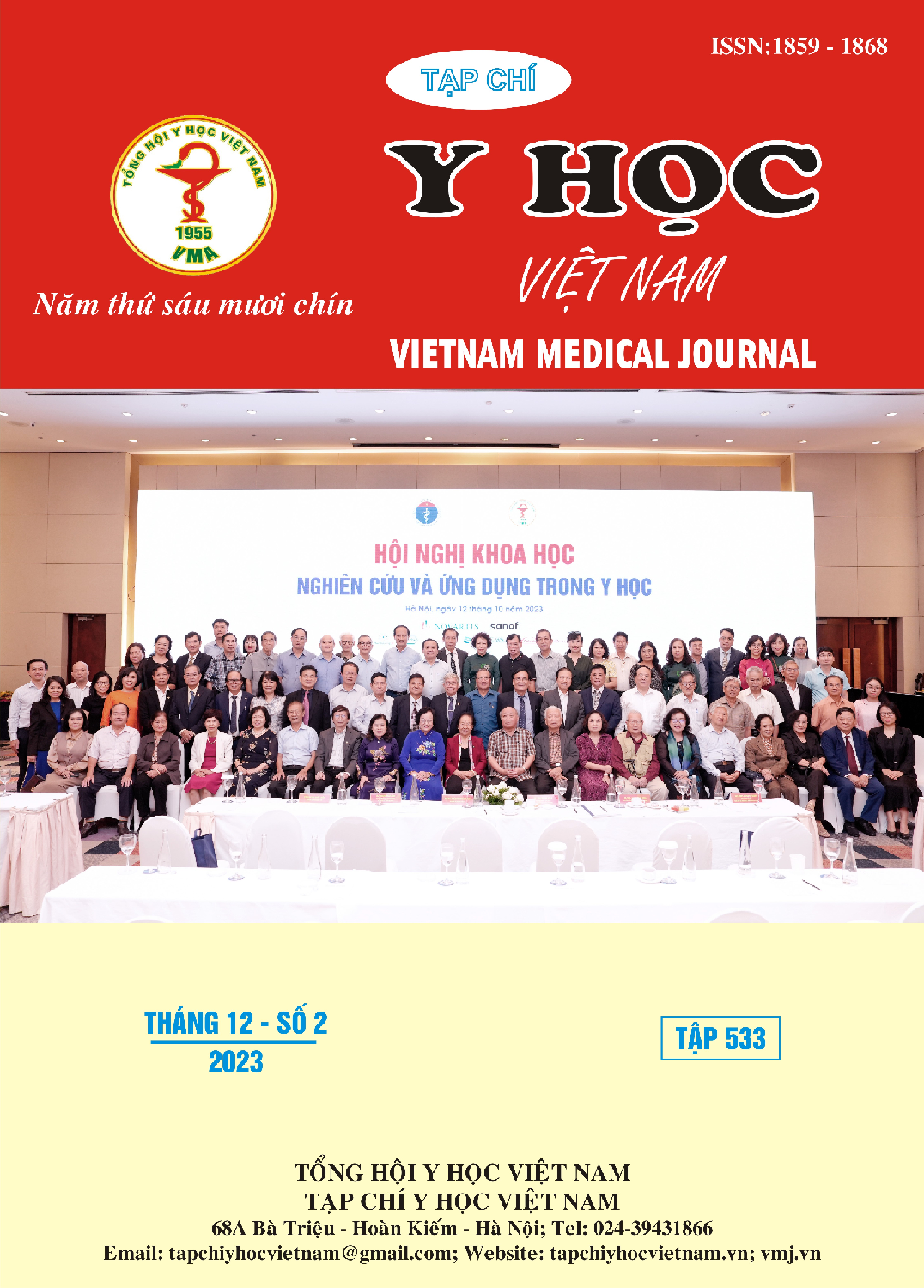RESULTS OF SINGLE STAGE TREATMENT OF GALLBACK STONES COMBINED WITH CHORD DUCTION STONES USING LAPAROSCOPIC CHOLECYSTECTOMY AND ENDOSCOPIC RETROGRADE CHOLANGIOPANCREATOGRAPHY
Main Article Content
Abstract
Objectives: To evaluate the early results of one-stage treatment of cholelithiasis in combination with common bile duct stones by laparoscopic cholecystectomy and endoscopic retrograde cholangiopancreatography. Subjects and methods: A retrospective descriptive study on 44 patients treated with single-stage gallstones in combination with common bile duct stones by laparoscopic cholecystectomy and endoscopic retrograde cholangiopancreatography at Ha Medical University Hospital From January 2018 to December 2022. Results: Mean age was 55.43 ± 18.12. Females accounted for the majority with 52.3%. 20 patients (45.5%) underwent endocarditis first and then had CTE surgery. 43/44 patients were successfully performed endoscopic intervention to remove OMC stones, 1 failed case had to be transferred to open laparoscopic OMC to remove stones, endoscopic cholangiography. The complications encountered all appeared after the procedure of NTDs. There were 6 complications (14%) including 1 case of duodenal perforation, 1 case of bleeding and 4 cases of acute pancreatitis. The gravel clean rate is 100%. The mean postoperative hospital stay was 3.93 ± 2.30. Conclusion: Laparoscopic cholecystectomy combined with endoscopic retrograde cholangiopancreatography in the same period for the treatment of gallstones in combination with common bile duct stones is a safe, effective technique with high success rates and high rates of success. Low complication rate, short hospital stay, should be applied in medical facilities with full equipment and experienced surgeons.
Article Details
References
2. Nguyễn Hoàng Linh (2019). Kết quả bước đầu nội soi cắt túi mật kết hợp nội soi mật tụy ngược dòng. Tạp chí Y học Việt Nam. Số 2 (478) Tháng 5.
3. Lê Huy Cường (2021). Kết quả phẫu thuật nội soi cắt túi mật phối hợp nội soi mật tụy ngược dòng 1 thì điều trị sỏi túi mật và sỏi ống mật chủ tại Bệnh viện Đa khoa Trung tâm An Giang. Tạp chí Y dược học Cần Thơ. (37).p28-35.
4. Williams E, Beckingham I, El Sayed G, et al. Updated guideline on the management of common bile duct stones (CBDS). Gut. 2017; 66(5): 765-782. doi: 10.1136/gutjnl-2016-312317.
5. Tazuma S, Unno M, Igarashi Y, et al. Evidence-based clinical practice guidelines for cholelithiasis 2016. J Gastroenterol. 2017;52(3): 276-300. doi:10.1007/s00535-016-1289-7.
6. Kostrzewska M, Baniukiewicz A, Wroblewski E, et al. Complications of endoscopic retrograde cholangiopancreatography (ERCP) and their risk factors. Adv Med Sci. 2011;56(1):6-12. doi: 10.2478/v10039-011-0012-4.
7. Natsui M, Saito Y, Abe S, et al. Long-term outcomes of endoscopic papillary balloon dilation and endoscopic sphincterotomy for bile duct stones. Dig Endosc. 2013;25(3):313-321. doi:10.1111/j.1443-1661.2012.01393.x.
8. Mallick R, Rank K, Ronstrom C, et al. Single-session laparoscopic cholecystectomy and ERCP: a valid option for the management of choledocholithiasis. Gastrointest Endosc. 2016; 84(4): 639-645. doi:10.1016/ j.gie.2016.02.050.


